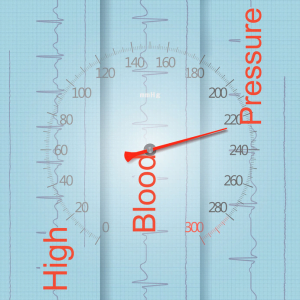While all your organs are vital, the health of your heart has both short- and long-term benefits. That’s because your heart can’t miss a beat, or your life hangs in the balance. It is for this reason that…
Incredible Health Requires Excellent Heart Health
Your heart does a tremendous amount of work. Behind every heartbeat, this muscle pumps blood through every part of your body. To do this, it transports blood through three different areas of the circulatory system. These include blood vessels that serve the heart, (the coronary), lungs (pulmonary), and other systems of the body (systemic). In this article, we’ll discuss two major problems related to heart health and how to keep it working optimally.
High Blood Pressure
 As an American, you’ve read about the dangers of high blood pressure (hypertension). In fact, 45 percent of adults in the United States have hypertension. This is diagnosed by taking your blood pressure. Having hypertension is defined as a systolic blood pressure greater than 130 mm Hg (simply noted as the top number), or a diastolic blood pressure greater than 80 mm Hg (the bottom number). While many people take medication for hypertension, only about 1 in 4 adults (24%) with hypertension have their condition under control.
As an American, you’ve read about the dangers of high blood pressure (hypertension). In fact, 45 percent of adults in the United States have hypertension. This is diagnosed by taking your blood pressure. Having hypertension is defined as a systolic blood pressure greater than 130 mm Hg (simply noted as the top number), or a diastolic blood pressure greater than 80 mm Hg (the bottom number). While many people take medication for hypertension, only about 1 in 4 adults (24%) with hypertension have their condition under control.
Managing Blood Pressure, Naturally
Persistent high blood pressure can increase your risk of several serious and potentially life-threatening health conditions, such as heart attacks, strokes, heart disease, and heart failure. The good news is that several natural vitamins, minerals, and herbal supplements can support healthy levels of blood pressure. These ingredients include, hawthorn, vitamin B6, potassium, and magnesium, and are all conveniently contained in the MaxLiving BP Support.
The good, the bad, the cholesterol…
 For years, the word cholesterol has evoked images of an evil villain in a superhero movie. The truth is…it’s not all bad.
For years, the word cholesterol has evoked images of an evil villain in a superhero movie. The truth is…it’s not all bad.
Cholesterol is a waxy, fat-like material that’s found in all the cells in your body. Your body makes cholesterol, so it’s a natural component of our biology. We also consume it in our diet as it is contained in some foods, such as meat and dairy products.
While our bodies need cholesterol to function properly, we need to understand how to balance bad, and good, cholesterol
LDL cholesterol is known as bad cholesterol as it is the main source of cholesterol buildup and blockage in the arteries.
HDL cholesterol is known as good cholesterol because it helps remove cholesterol from your arteries.
If you have an imbalance of cholesterol in your blood, you have a higher risk of coronary artery disease.
Measuring Cholesterol Levels
Your healthcare practitioner can order a blood test called a lipoprotein panel to measure your cholesterol levels. You’ll need to fast (not eat or drink anything but water) for 9 to 12 hours, before the test. Here’s what the test will reveal:
- Total cholesterol – a measure of the total amount of cholesterol in your blood. It includes both low-density lipoprotein (LDL) cholesterol and high-density lipoprotein (HDL) cholesterol
- Specific levels of bad (LDL) and good (HDL) cholesterol
- Non-HDL – this number is your total cholesterol minus your good cholesterol. Your bad cholesterol includes LDL and other types of cholesterol such as VLDL (very-low-density lipoprotein)
- Triglycerides – another form of fat in your blood that can raise your risk for heart disease, especially in women
Understanding Cholesterol Numbers
Cholesterol numbers are measured in milligrams per deciliter (mg/dL). Here are the healthy levels of cholesterol, based on your age and gender:
Men age 20 or older:
| Type of Cholesterol | Healthy Level |
| Total Cholesterol | 125 to 200mg/dL |
| Non-HDL | Less than 130mg/dL |
| LDL | Less than 100mg/dL |
| HDL | 40mg/dL or higher |
Women age 20 or older:
| Type of Cholesterol | Healthy Level |
| Total Cholesterol | 125 to 200mg/dL |
| Non-HDL | Less than 130mg/dL |
| LDL | Less than 100mg/dL |
| HDL | 50mg/dL or higher |
Triglycerides are not a type of cholesterol, but they are part of a lipoprotein panel (the test we’re discussing that measures cholesterol levels). A normal triglyceride level is below 150 mg/dL. You might need treatment if you have triglyceride levels that are borderline high (150-199 mg/dL) or high (200 mg/dL or more).
About the Author
 Zach Zovath graduated with a bachelor’s degree in Exceptional Education from the University of Central Florida and continued on to receive his master’s degree from the College of Education and Human Performance at the University of Central Florida. He is a master-level personal trainer with specializations in corrective exercise, performance enhancement, prenatal/postpartum core stability, and exercise therapy. Zach uses the education, experience, and training that he has gained from working in the health and fitness industry as a personal trainer, coach, and health consultant to create fast and effective exercise programs for healthcare facilities.
Zach Zovath graduated with a bachelor’s degree in Exceptional Education from the University of Central Florida and continued on to receive his master’s degree from the College of Education and Human Performance at the University of Central Florida. He is a master-level personal trainer with specializations in corrective exercise, performance enhancement, prenatal/postpartum core stability, and exercise therapy. Zach uses the education, experience, and training that he has gained from working in the health and fitness industry as a personal trainer, coach, and health consultant to create fast and effective exercise programs for healthcare facilities.


